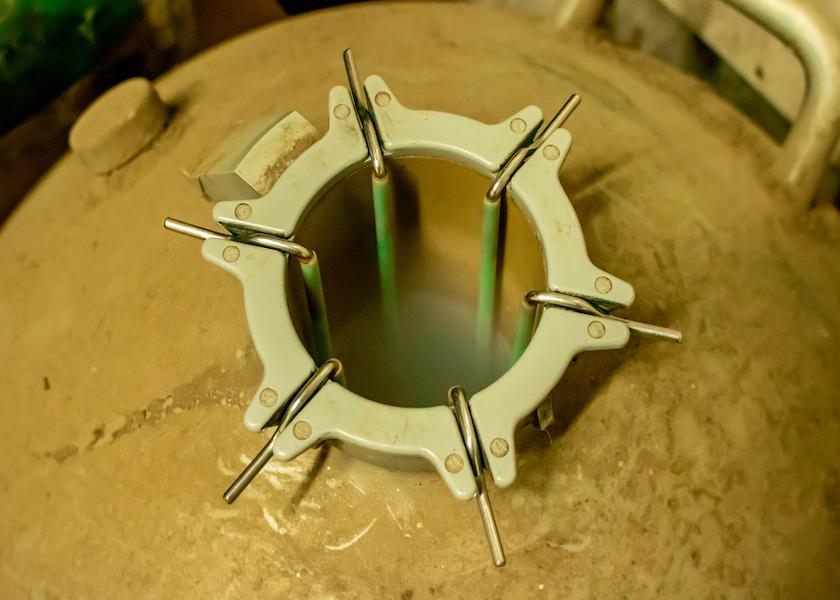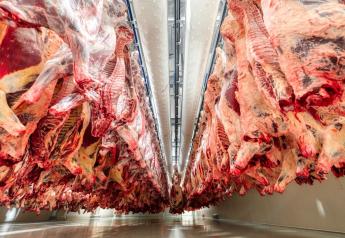The 5 Steps for A.I. Success

There’s no bull about it, artificial insemination (A.I.) has come a long way since its first use in dairy cattle during the late 1930s. While the technology has vastly changed, the basic principles still remain. Karen Johnson, an Extension educator at the University of Minnesota, provides these five steps for A.I. breeding success:
1. Proper Semen Handling – Depending on the sire, semen costs can add up quickly. Therefore, it’s crucial to make sure you handle the semen properly. Johnson recommends using tweezers to handle the semen straw as your fingers could potentially lead to the semen thawing too quickly. Additionally, if you are breeding multiple animals, she suggests only handling the number of straws that you can successfully use within 15 minutes of thawing.
Once the straw is removed from the tank, shake it to eliminate any liquid nitrogen at the end of the cotton plug. The semen should then be thawed at 95°F for 45 seconds. If this temperature is not accurate, the improper thawing could affect the quality and viability of the semen, according to Johnson.
2. Loading the Breeding Gun – Once the semen has been thawed, it’s time to load the breeding gun. Johnson suggests warming the gun by stroking it vigorously with your hand five or six times. Next, pull the plunger back about 6 inches and place the straw inside with the cotton plug first. From there, cut the sealed end of the straw at a 90° angle to ensure that the plastic sheath seals tightly to prevent back flow and then place the breeding gun between your body and shirt to maintain the optimal temperature.
3. Breeding the Cow – “It is recommended to use your left hand in the rectum and right hand to guide the insemination gun regardless of your dominant hand,” Johnson says. “Use a new breeding glove for every insemination and lubricate the glove with mineral oil or a commercial A.I. lubricant.”
Forming a cone like shape with your fingers, gently enter the rectum and palpate to remove excess manure. Next, clean the vulva to prevent contamination and slowly insert the gun. Johnson recommends inserting upwards at a 30° angle to prevent the gun from accidently entering the bladder.
“When the gun is 6 inches to 8 inches inside the vagina, raise the rear of the gun to level position and slide forward until it contacts the beginning of the cervix,” Johnson says. “If the gun is getting caught in the folds of the cervix, try stretching the cervix away from you with your left hand to free the gun and allow easier passage to the cervix.”
Once the cervix has been located, manipulate it slightly to detect the cervical rings. Work your way through the rings, but never use force. The gun should slide freely with little resistance once the rings have been cleared.
4. Depositing – After entering the cervix, it’s time to deposit the semen.
“Ideally, semen should be deposited just beyond the cervix into the uterine body,” Johnson says. “Depositing the semen in the uterine body allows the semen to evenly distribute between both horns.”
Using the plunger, slowly deposit the semen. This should take roughly five seconds according to Johnson. Make sure your palpating hand is not blocking the flow of semen and do not pull back on the cervix. Once finished, gently remove the gun. Johnson suggests checking for any abnormal discharge and noting it in your breeding records.
5. Clean Up – Last, but not least, it’s time to clean your equipment. Before taking off your breeding glove, remove the used sheath. Then dispose of your used glove and clean equipment thoroughly. Lastly, recheck to make sure the desired bull was used and note all information in your breeding records.







